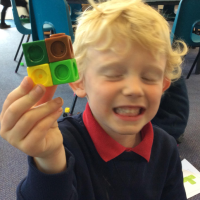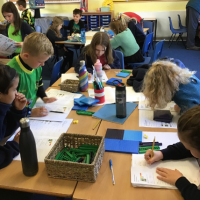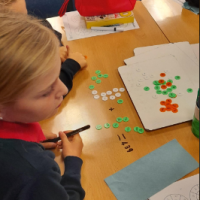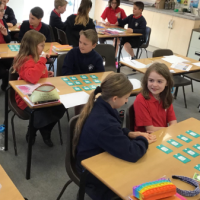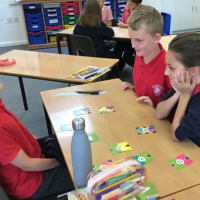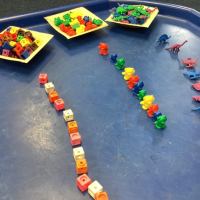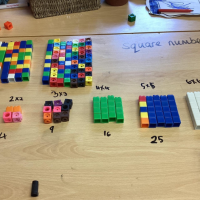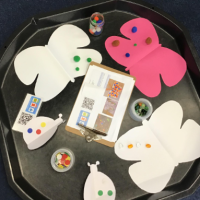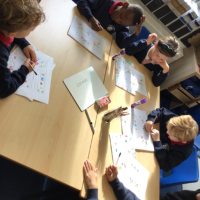Mathematics
“Mathematics is a creative and highly inter-connected discipline that has been developed over centuries, providing the solution to some of history’s most intriguing problems. It is essential to everyday life, critical to science, technology and engineering and necessary for financial literacy and most forms of employment. A high quality mathematics education therefore provides a foundation for understanding the world, ability to reason mathematically, an appreciation of the beauty and power of mathematics and a sense of enjoyment and curiosity about the subject.”
(DfE, 2013, Mathematics programmes of study: key stages 1 and 2, National curriculum England, P3)
Subject Rational
At St Mary’s, our vision is ‘Enjoy, Explore, Excel together; be amazing.’ Therefore, we aim for our children to enjoy their mathematics learning, have the opportunity to explore mathematical concepts and achieve their very best.
Our teaching follows the National Curriculum with these aims:
- become fluent in the fundamentals of mathematics, including through varied and frequent practice with increasingly complex problems over time, so that pupils develop conceptual understanding and the ability to recall and apply knowledge rapidly and accurately
- reason mathematically by following a line of enquiry, conjecturing relationships and generalisations, and developing an argument, justification or proof using mathematical language
- can solve problems by applying their mathematics to a variety of routine and non-routine problems with increasing sophistication, including breaking down problems into a series of simpler steps and persevering in seeking solutions
How we teach Maths
We are on an exciting journey of embedding teaching for mastery to ensure that children of all ages are acquiring a deep, long-term, secure and adaptable understanding of the subject. Our approach is framed around the Five Big Ideas (NCETM) which underpin teaching for mastery. This means that the children are on a journey together, allowing no child to be left behind. This is achieved by following a small step sequence, which is reviewed daily to respond to the needs of the children. Interventions are used as needed to build in smaller steps to minimise the risk of any child falling behind to ensure that misconceptions are overcome and gaps are closed. This enables the children to be ready to progress onto the next concept.
Five Big Ideas in Teaching for Mastery:
Coherence
Lessons are broken down into small connected steps that gradually unfold the concept, providing access for all children and leading to a generalisation of the concept and the ability to apply the concept to a range of contexts.
Representation and Structure
Representations used in lessons expose the mathematical structure being taught, the aim being that students can do the maths without recourse to the representation
Mathematical Thinking
If taught ideas are to be understood deeply, they must not merely be passively received but must be worked on by the student: thought about, reasoned with and discussed with others
Fluency
Quick and efficient recall of facts and procedures and the flexibility to move between different contexts and representations of mathematics
Variation
Variation is twofold. It is firstly about how the teacher represents the concept being taught, often in more than one way, to draw attention to critical aspects, and to develop deep and holistic understanding. It is also about the sequencing of the episodes, activities and exercises used within a lesson and follow up practice, paying attention to what is kept the same and what changes, to connect the mathematics and draw attention to mathematical relationships and structure.
The Five Big Ideas were first published by the NCETM in 2017 - https://www.ncetm.org.uk/teaching-for-mastery/mastery-explained/five-big-ideas-in-teaching-for-mastery/
How Maths is assessed at St Mary’s
Maths learning is assessed through a combination of formative and summative assessment methods.
Summative methods are used by teachers to help inform learning and progress ‘in the moment.’ It is continuous and informal and is central to every maths lesson. This is achieved through questioning, class discussions, independent work and ‘hinge questions.’ Towards the end of the teacher input, a hinge question is used to assess what the children know and identify any misconceptions - this informs what happens next in terms of starting points and the focus of teacher and TA support. The check point/hinge question involves multiple choice with some responses including misconceptions and an ‘I’m not sure yet…’ as option D.
Formative assessment takes place after the teaching at a later point and is measured against a standard. This provides an overall progress measure of children’s mathematics learning. At the end of a block of learning, the children engage with an exit assessment to show whether or not they are secure with the year group objectives. This informs teacher assessment for tracking objectives. At the end of the Autumn, Spring and Summer Terms, children undertake a standardised assessment to provide further opportunities for teachers to track children’s overall progress and inform teacher assessment.

